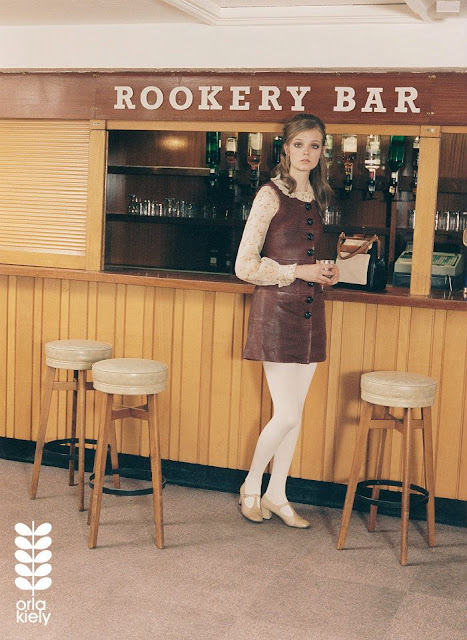** This article was written for and published in Catalyst Magazine. It isn't exactly fashion related, but it's close to my heart all the same **
WORDS BY SIGRID (SIGGI) MCCARTHY.
Melbourne is
regarded as the world’s most liveable city, and this
is due in part to its access to non-urban areas known as green wedges. Often
referred to as the ‘lungs’ of Melbourne, Victoria’s green wedges have been protected for the most part by the planning scheme originally implemented by the Hamer
Liberal Government in the 1970s.
These non-urban
areas of Metropolitan Melbourne provide more than just breathing space for
Victorians. They safeguard agricultural uses, preserve rural and scenic
landscapes, and are home to some of our natural water catchments – providing us with some of
the purest water in the world. Since they were identified, successive
governments have worked hard to protect these safeguards, acknowledging that
they are an extremely important part of Victoria.
The current
government’s strategies to remove land
from the green wedges and to reform Victoria's
planning system highlights just how little Ted Baillieu regards previous efforts by bipartisan governments to
protect our green wedges. Under his logical inclusions and anomalies
scams, 6,000 hectares have been removed from green wedge
zones, giving way for housing and commercial development. Now, under the
guise of planning reforms, existing planning
restrictions will be removed, allowing extensive tourism, commercial and non-agricultural
projects within green wedges.
Kahn Franke, president of the
Green Wedge Coalition and member of the Green Wedge Protection Group Inc.
Nillumbik states that “The current zone reforms are a recipe for planning
disaster; there is no vision, and no justification. They are poorly thought out
and will benefit a few at the expense of all Melbournians.”
Other people
share similar concerns to Franke. Chief Executive of Environment Victoria,
Kelly O’Shanassy acknowledged, “The people that will benefit most from the
Baillieu Government decisions are developers and land owners that will become
very wealthy from selling their land. Many of those that will benefit
financially have lobbied the government strongly to develop in the green
wedges.”
Melbourne
already has 30 years’ land supply available for use. This leads many people to speculate why the government doesn’t
take advantage of opportunities for smart urban development within existing
urban boundaries. By refusing to protect our green wedges, the Baillieu government
is merely encouraging urban sprawl.
Unlike the
proposed reforms, existing planning legislation puts sustainable development
and community wellbeing at the forefront, ensuring Melbournians benefit from
fresh air, clean water and locally produced fresh food. It is important we keep
in mind that producing food locally reduces carbon emissions and transport
costs, meaning that protecting non-urban areas of Melbourne helps lower the
cost of food and ease the financial burdens of individuals and families.
In July 2012, Planning
Minister Matthew Guy spoke out against critics of the planning reforms stating,
“The only people who criticise these reforms are planning
dinosaurs…Fitzroy-based academics.” This superficial retort ignores the many
community members across the twelve designated green wedge areas that are
deeply concerned by the government’s proposal, fearing the reforms lack
long-term vision and community involvement.
Kelly
O’Shanassy points out that these reforms raise more than just environmental
concern. “…The people who move to these new suburbs will have severely limited
access to public transport and will face ever increasing travel costs in line with
petrol prices. Housing approvals are falling in existing outer suburban areas
making it questionable as to why new suburbs are even needed.”
At the Green Wedge Coalition’s
AGM held on 29th August 2012, community representatives, activists
and past and current politicians gathered to discuss their concerns regarding
the future of our green wedges. Those in attendance included former Labor premier Mr Steve
Bracks and Lady Hamer, wife of former Liberal premier Sir Rupert Hamer. Both these public figures expressed their dismay over
the proposed reforms.
Lady Hamer spoke passionately
about upholding her husband’s legacy, reminding us “…any encroachment on our
green wedges is irreversible.”
2012 is a year
of great significance, as it marks ten years since the Bracks Labor Government
adopted the Urban Growth Boundary and the
current Green Wedges Protection Policy, and forty
years since Sir Rupert Hamer’s legacy was introduced.
As a young student, this piece of writing is not fuelled by political
or financial gain. It is written out of concern for our city’s future, as I worry
that the government’s plans, if implemented, will reduce the quality of life
for all Victorians. Victoria’s youth will be left to deal with the devastating social and planning consequences caused by this government’s greed and collective
ignorance.
Kahn Franke announced at the AGM that the government’s reforms
will “white ant the wedges from the inside leaving them as green in name only”,
and I can’t help but agree with him. These reforms will undoubtedly change the
face of Melbourne forever.























































